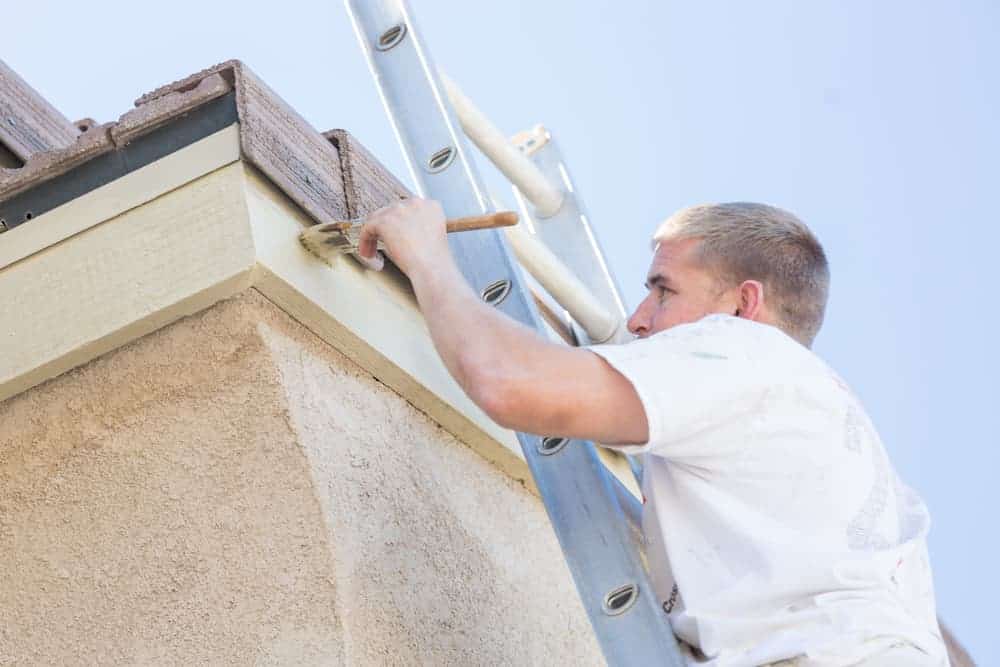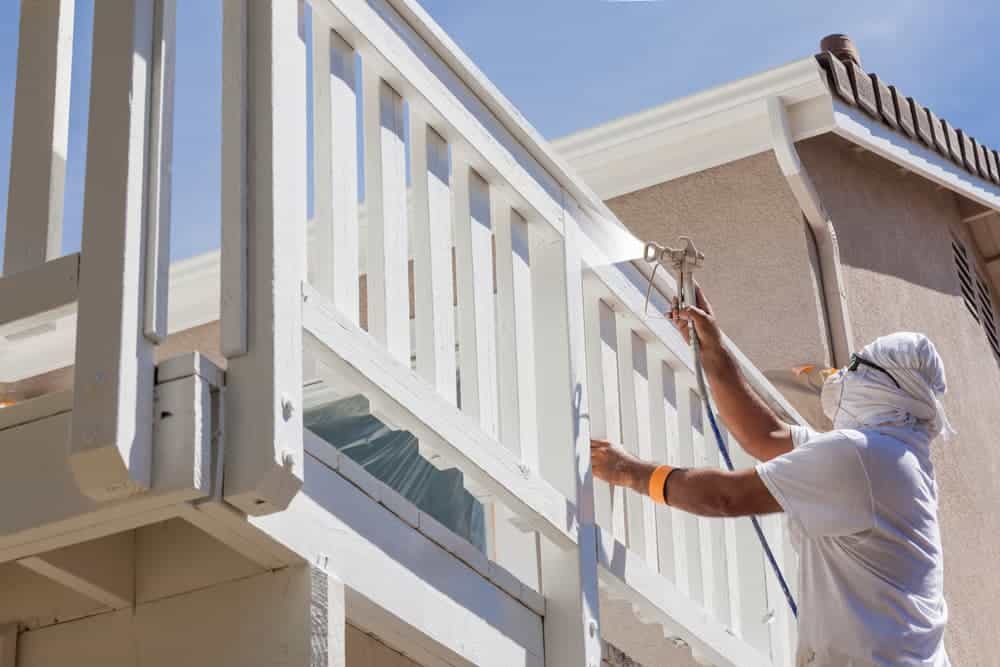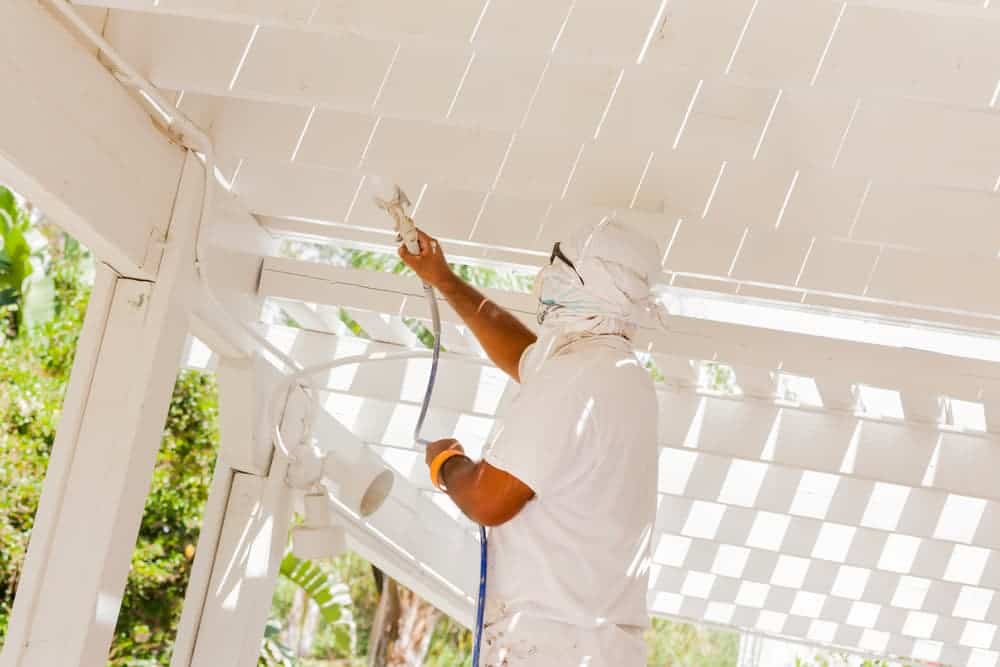Does your home need a quick makeover? A can of paint is an inexpensive way to brighten it up! A paint job is not as laborious as other home improvement projects, too. But which technique should you go for: brush or spray painting a house?
You may think these are similar as both methods lead to the same results. Knowing their differences, however, is crucial if you want to save time, effort and money. Here are the things you need to know.
Brush vs Spray Painting a House: The Difference
First, let’s differentiate both painting methods. Brush painting requires a paintbrush to apply paint onto surfaces. It is manual labour, so it needs more time to finish. The beauty of brush painting, though, is that you can use specialised brushes to suit every job, from minor to more intricate. You also get to pick among a myriad of paint colours or work with custom ones if you like.
People who are after speed and convenience, however, opt for spray painting. That’s because everything about this technique is quick, from application to drying time. It uses a sprayer to propel paint onto the surface. Tank, HVLP and airless sprayers are the most common types. Spray painting is also your method of choice if you want even coverage with a glossy or satin finish.
Now, if you’re trying to decide which of these methods to use, here are some points for comparison.
Cost
Homeowners with a tight budget should choose brush painting. There are several reasons why. For one thing, spray painting tools are costly than regular brushes or rollers. Even renting or buying entry-level sprayers tends to cost more.
Sprayers also need about two to three times more paint. The extra paint is not for the surface, though. Some of which will end up in the hose line. You can save some of it, but most go to waste. And if you are spray painting a house exterior, lightweight paint droplets are blown out as overspray.

Speed
If you want to save time or finish your painting project over the weekend, go for the spraying method. This technique can cover a large area more quickly than brush application. And as you’ll only be spraying a thin layer of paint onto the surface, drying takes no time either.
Preparation for this technique, however, is more laborious. You need to set up several tools to get started. And before that, you need lots of plastic sheeting to protect other areas from being sprayed with paint. Plus, you may need to mask up thoroughly to steer clear of fumes. You may find brush painting quicker in this aspect. But once the preparation is over, paint spraying finishes the bulk of the work way faster than its counterpart.
Ease of Application
Spray painting a house exterior or interior is undoubtedly the easiest to do due to less manual work. Paintbrushes also tend to leave visible brush marks on the surface, which does not happen with a spray painter. But not everything about applying paint with a roller or brush is difficult, though.
A paint sprayer may be easy to use, but it needs some practice to figure out. Beginners will likely deal with drips, overspray mess and a not-so-stellar paint job on their first attempt. Spray painting also involves fast and continuous work sessions, which can be tiring.
Brushing or rolling paint, on the other hand, is more unhurried and relaxed. If you’re working on a big project, you can easily break it into hourly segments to make it less stressful. You can stop and rest whenever you want to. The leisurely phase is also somewhat more gratifying and fulfilling for some DIYers.
Paint Coverage
If you are painting narrow crevices and hard-to-reach areas, then reach for a sprayer. You will have to put more effort when painting tight corners with a traditional brush. Also, spray painting a house is the best technique for grooved and textured surfaces like crown moulding, a brick wall and a popcorn ceiling.
Brush or roller painting has one crucial advantage in terms of coverage, though. And that is stronger paint adhesion. Spray painting propels paint, resulting in thinner coats and show-through issues. With the brushing technique, you use effort to directly paint onto the surface, making the job quality last longer.
Also, you have more control when working with a paint roller or brush. You get to avoid uneven coverage or applying too much paint on one spot, which is typical with sprayers.

Clean-Up
Painting is an easy project, but it is also messy, no matter the method you use. Brushes can create drips, while a sprayer can leave paint mist. You can, however, shorten clean-up time through careful masking with drop cloths and painter’s tape. Make sure to wear protective painting gear as well. More importantly, clean up your tools right away to prevent residue build-up on the brush or in the spray gun.
Brush vs Spray Painting a House: Tips
Both techniques have their share of disadvantages. But there are ways how to counter them to make either method work for your project.
- Choose to spray paint when working outdoors or with an empty indoor space. This tip will help avoid spraying paint mist on your precious furniture or floor. It also lessens the prep time and the use of tape or cloth. Just make sure to put your outdoor project on hold when it’s a windy day.
- Choose brushed-on paint for spots that need attention. Areas exposed to weather elements, for example, will benefit from a thick coat of hand-brushed paint. It will save you the time and effort of redoing the paint job after only a few months. This technique is also best for handling complex trim and surface imperfections.
- Spray paint close to the surface and save any excess. Spraying closer can help control overspray. Before doing this, suit up to protect yourself from any blow-back from the sprayer. When done, avoid spraying out the extra paint into the air. Pump it back into the container instead to reduce wastage.
- Match the proper brush size with your project or surface. A broader brush or roller will surely quicken the work when painting ceilings or an entire wall. If you do a lot of brush painting at home, it’s best to invest in high-quality brushes, too. Treating them with care after every use can avoid those unsightly brush or roller marks.
- Apply the back-brushing technique when possible. You will need a partner to pull this off. One will have to spray the surface while the other quickly follows it up with long, even brush strokes. It may sound like a laborious process. But back-brushing takes care of every nook and cranny, plus ensure better paint adhesion.
Brush vs Spray Painting a House: The Verdict
Ultimately, the most suitable application method depends on your budget, skill and project or surface. Consider these factors to achieve a paint job that’s high quality, cost-efficient and long-lasting. And if applicable, try combining both techniques to have the best of both worlds!


